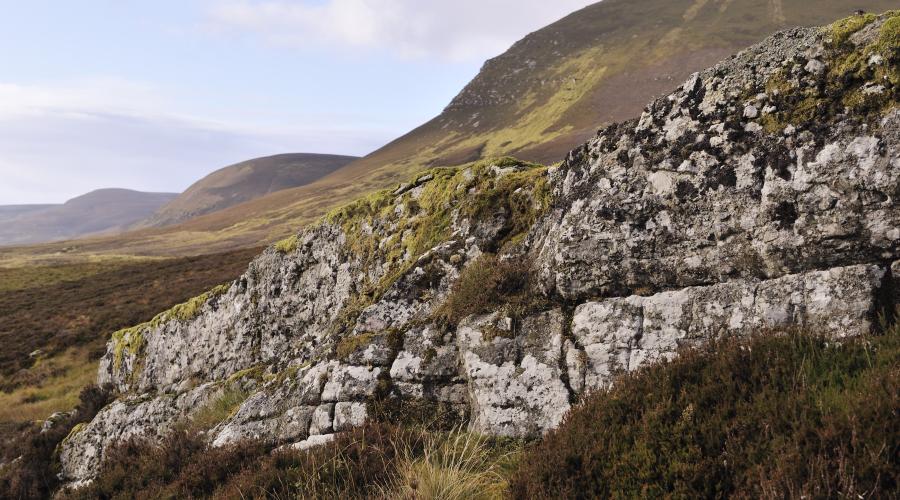
Ecosystem dependence on geodiversity
Conservation management of geodiversity, our non-living natural world, is crucial to sustaining living species and habitats and environmental quality.
Rocks, sediments and soils form the land on which we live and on which the plants and animals of Scotland’s ecosystems thrive.
Geomorphological processes, which shape our mountains, rivers and coasts, also maintain the dynamic habitats and ecosystems on which our biodiversity depends.
Geological processes are a controlling factor in climate change and its impacts. Geodiversity and biodiversity interact to shape ecosystems, and these links, in turn, affect ecosystem responses to climate change.
Get an overview of the geology, soil and landscape impacts of climate change.
How geodiversity affects biodiversity
Substrate composition plays a big part in determining biodiversity. For example, limestone pavement communities and serpentine heath rely on the underlying rock type, especially its chemical composition. Similarly, blanket bog communities depend on the underlying soil type (peat) and drainage.
Other factors influence biodiversity such as:
- latitude
- altitude
- slope
- aspect
- climate
- hydrology
- past and present site management
But many of these are themselves influenced by geodiversity.
How geodiversity shapes landscapes
Geological processes shape the landscape. Over geological timescales, the cumulative effects of erosion and weathering wear away softer rock to form valleys. More resistant rock remains as higher altitude terrain.
On a shorter timescale, geomorphological processes also help to shape the landscape:
- fluvial processes have created a diversity of river habitats
- coastal processes are vital to the well-being of coastal biodiversity
How geodiversity affects species distribution
On a very local scale, you can study a geological map and soil map to work out where specific conditions are located. This can help to pinpoint the likely locations of a species with particular requirements.
These might include:
- substrate pH
- drainage requirements
- chemical tolerance
Ecosystem change and geodiversity
Ecosystem responses to climate change and sea-level rise will depend on geomorphological processes and their ability to resist change.
For rivers, coasts and steep hillsides, adaptation measures must work with natural processes, not against them, to be successful and sustainable. These must be used at suitable spatial scales (e.g. catchments and coastal zones).
Some habitats may become more dynamic as geomorphological processes change in nature and rate. More variety in such processes may make it easier for biodiversity to adapt to climate change. But some habitats and species may be unable to adapt fast enough as geomorphological activity speeds up.
More frequent flooding, and the greater erosion and rates of sediment movement that this brings, will affect the quality of freshwater habitats. So too will any changes in seasonal flows, e.g. the timing and duration of droughts. There may also be less recovery time between extreme events.
Geomorphological constraints on species adaptation centre on the speed of landscape readjustment and how long an area remains potentially unstable.






